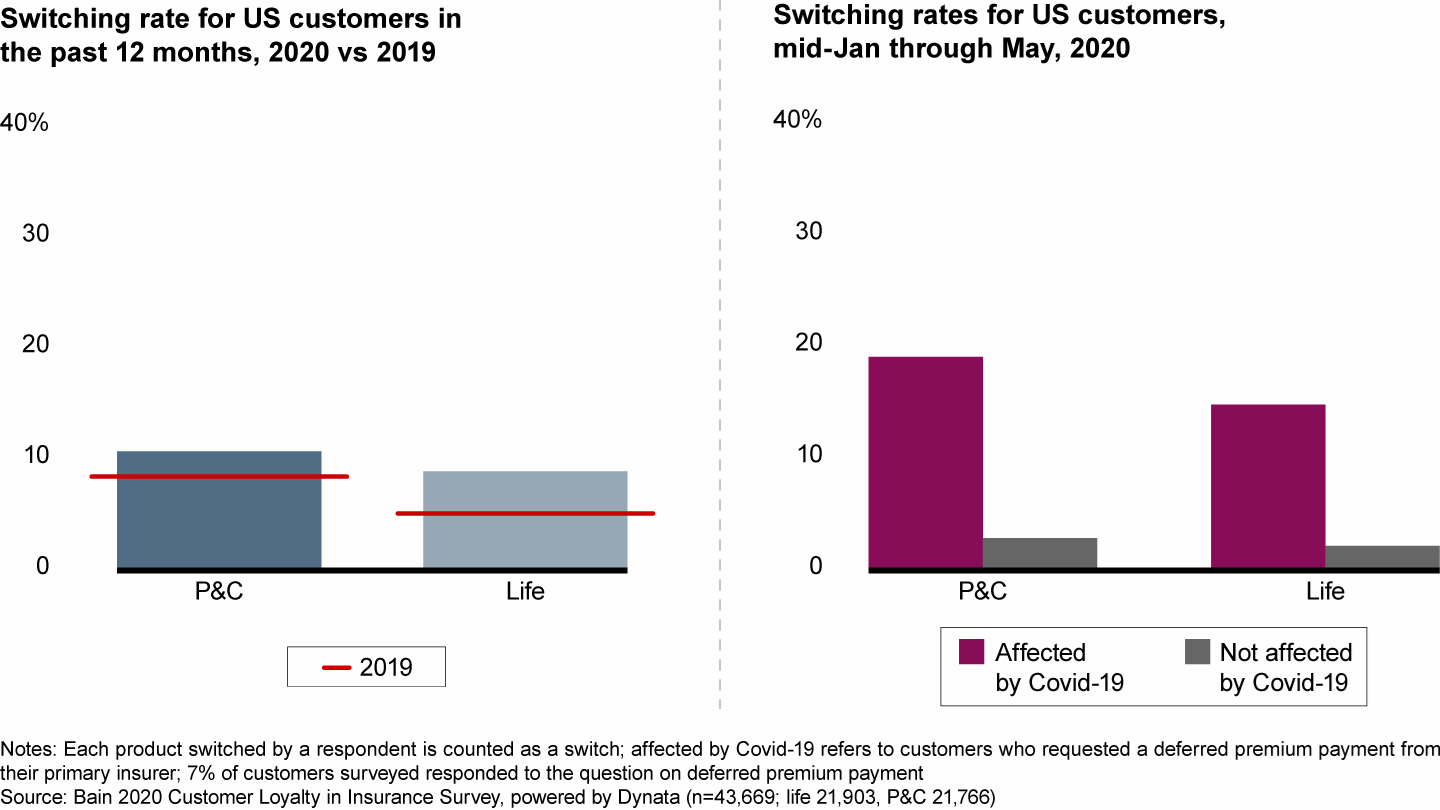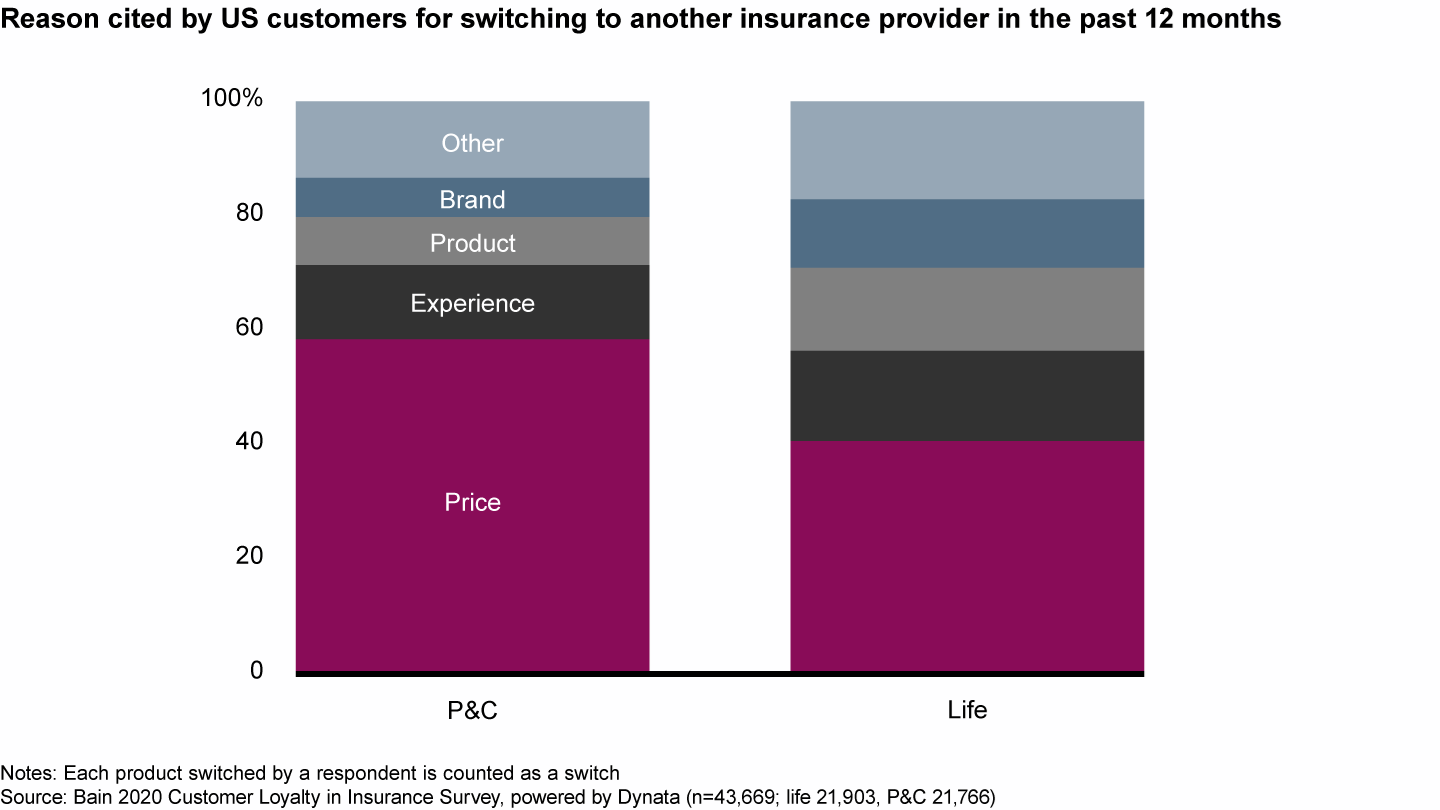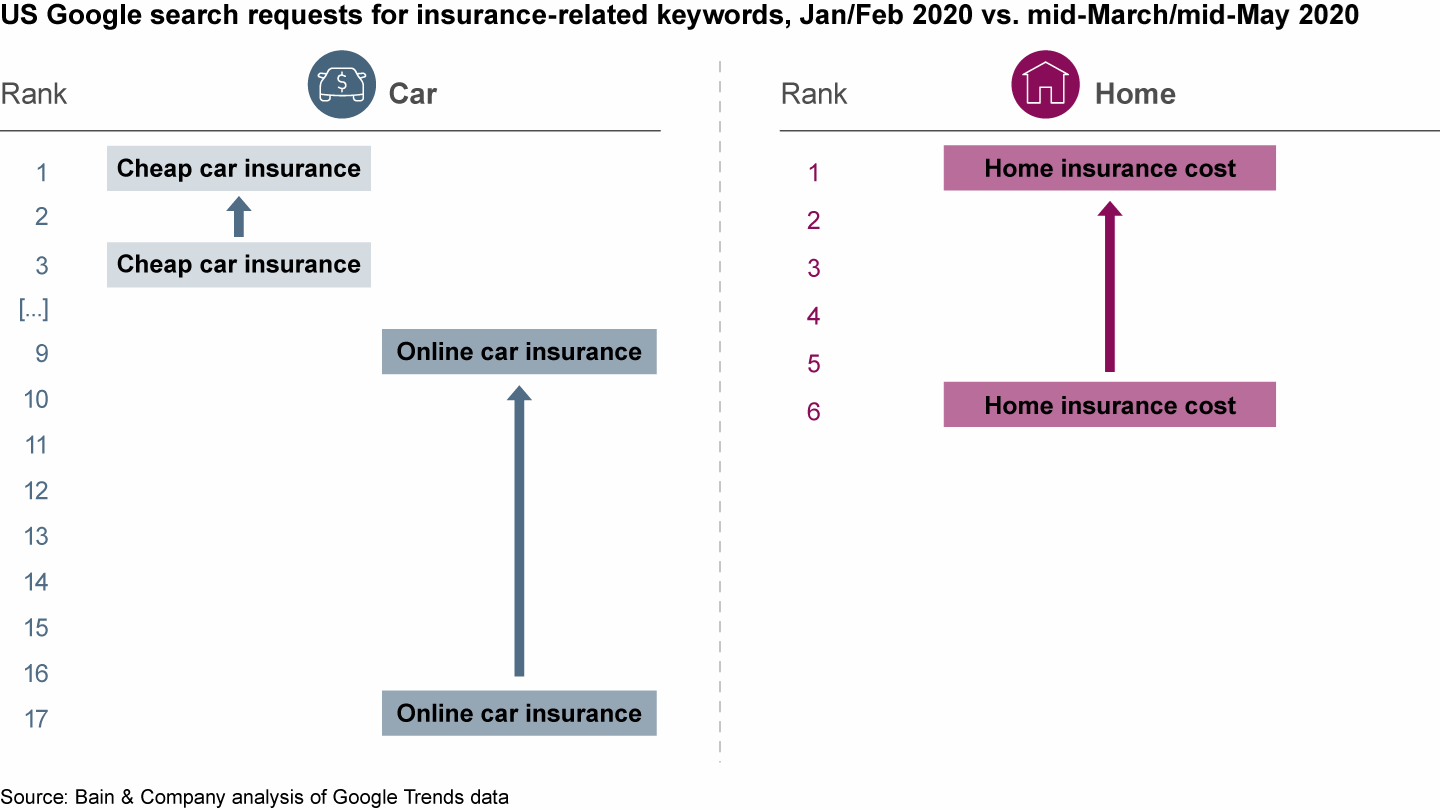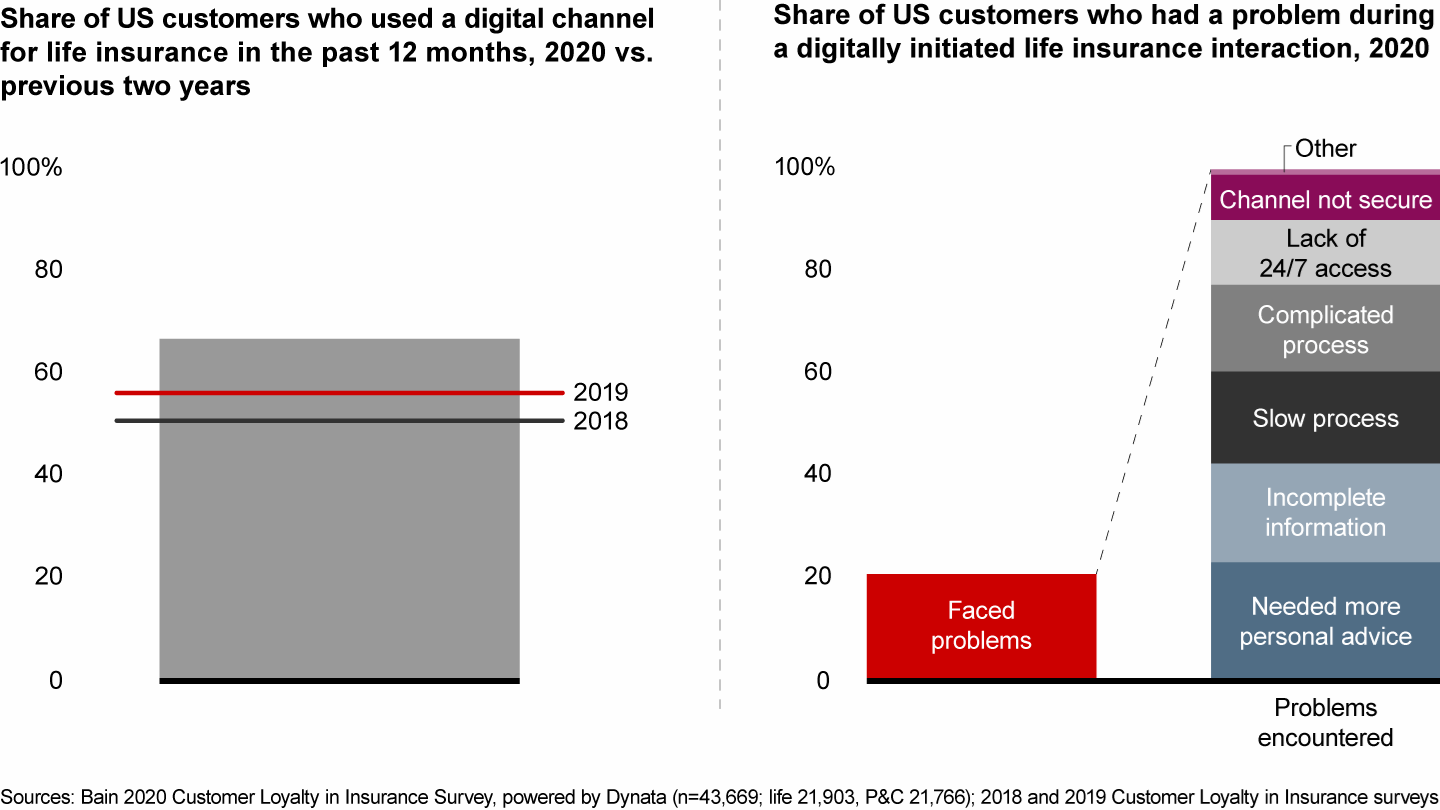Brief

Beyond Covid-19’s toll on human health, the pandemic and subsequent lockdowns have led to harsh economic conditions for many people. This turmoil has rippled through the insurance industry, in the form of shifting customer priorities and new operational models that rely far more on digital channels and work-at-home staffing.
To assess how consumer behaviors and perceptions about life and property and casualty (P&C) insurance have changed, Bain & Company is conducting a series of surveys worldwide. This brief covers our findings from the first survey of more than 43,600 consumers in the US, with implications for insurers in the areas of pricing, digital channels and tailored offerings.
Price looms larger
As one immediate effect of the pandemic on household finances, 18% of respondents with life policies requested temporary relief on their premium contribution. For P&C policies, 9% requested a deferred payment, in addition to the premium refund offered by many US insurers.
Price sensitivity shows up in other ways as well, such as switching behavior. Customers have switched insurance providers at a higher rate in 2020 compared with the previous year. The coronavirus accelerated that trend: From mid-January through the end of May, the switching rate among respondents who requested premium relief was 19% for P&C products and 15% for life products—far higher than among respondents who did not ask for relief (see Figure 1).
Customers are switching insurance providers at a higher rate


Price was the leading reason for switching cited by respondents overall (see Figure 2). We found other evidence in a separate global analysis of online search terms: Between mid-March and mid-May, “cheap car insurance” and “home insurance cost” were the leading keywords for insurance searches (see Figure 3).
Price is the main factor for insurance customers who switch


Customers have been doing more searches for cheap online insurance


Digital use surges
Consumers’ use of digital channels for insurance purposes has increased in the past year, particularly for research into a policy. Yet digital interactions do not always go smoothly. Some 21% of respondents who had a digital interaction in life insurance, and 12% in P&C, encountered problems, ranging from needing more personalized advice to a slow or complicated process (see Figure 4).
While more customers are using digital channels, a significant share face problems in their interactions


Usage-based insurance appeals
The sharp decline in cars on the road due to the pandemic has highlighted shortcomings in current insurance models. Although many incumbent insurers have offered premium rebates to compensate for reduced mileage and accident risk, proponents of usage-based insurance (UBI) note that the discounts don’t reflect the magnitude of traffic reduction.
Now, the economic uncertainty and price sensitivity caused by the pandemic may catalyze more switching to policies based on miles driven. Our survey found that 21% of respondents have already purchased UBI, and 56% said they will likely purchase it in the future.
Three practical lessons for insurers
Consumers’ responses to Covid-19, on top of longer-term trends, suggest how insurers should concentrate investment and resources to reduce churn of existing customers and attract new ones:
- Tailor the offering. All-inclusive, high-priced products have become obsolete. Effective tailoring includes products designed for specific customer segments, more simple and affordable products, and greater price transparency. Besides those basics, insurers should enhance their demand forecasting capability by using analytics to identify customer segments and then further tailor offerings in real time.
Lemonade, a US-based insurance technology firm selling renters and homeowners insurance, uses artificial intelligence to continuously refine its customer segmentation. That helped Lemonade reduce its loss ratio threefold between early 2017 and early 2020. It also raised the conversion rate 65% for new renters policies during that period, while earning a very high level of customer loyalty as measured by the Net Promoter Score®.
- Ramp up digital distribution and marketing. To reach and attract new customers, particularly the growing number who research insurance options digitally, insurers need to increase their online share of voice and simplify their purchasing processes. This may entail greater reliance on direct-to-consumer models, more digital tools for agents, and less reliance on agents and brokers overall—as, for instance, FWD has done with its online life and general insurance products in Asia.
- Simplify, automate and digitalize operations. Policy volumes are likely to decline due to the economic effects of Covid-19. This heightens the urgency of lowering the cost to serve. Insurers can zero-base unnecessary activities, reduce claim management costs, take a more agile approach to project delivery and shift more operations permanently to a work-at-home model.
The pandemic clearly has altered the weighting of consumers’ priorities for insurance. How long the new sentiments will endure is an open question. Insurers will want to do more analysis, combined with in-market testing, to refine their segmentation and deliver the offerings that each segment values, at the right price.
Net Promoter®, Net Promoter System®, Net Promoter Score®, NPS® and NPS Prism® are registered trademarks and service marks of Bain & Company, Inc., Fred Reichheld and Satmetrix Systems, Inc.

About the Research
Data powered by Dynata, a leading global first-party data and insights platform.

Coronavirus
The global Covid-19 pandemic has extracted a terrible human toll and spurred sweeping changes in the world economy. Across industries, executives have begun reassessing their strategies and repositioning their companies to thrive now and in the world beyond coronavirus.